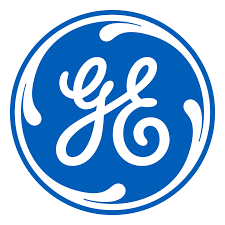Several of us from IEEE ICICLE Corporate L&D Group had a chat with Christopher Lind, Head, Global Digital Learning, GE Healthcare to talk about what it’s like to drive digital transformation in an iconic enterprise like GE — a very old company founded by famous Thomas Edison but turned very aggressive in transforming itself into a software company in the past decade or so. (reference: GE’S BIG BET ON DATA AND ANALYTICS)

Chris hosts a cool community called Learning Shark for L&D industry professionals, and also Learning Tech Talks on Friday mornings aiming to “Demystify the landscape of learning tech through unbiased conversations with technologies from around the world.“
Jessie: GE Healthcare and the whole GE group have been viewed as the leader of corporate innovations, often seen in management case studies such as in HBR. What role is the L&D department playing in driving innovations and the transformation of GE?
GE has operations in many industries, and different businesses have different ways to innovate and develop talent. Our role is to challenge the way the organization can reach and develop each employee. The old way of training has been there for decades and it’s not easy to change. You need to find a pain point and push on it really hard to change their way of doing things.
The L&D function is decentralized. L&D is supporting business units’ performances, solving their pain points, and helping them think differently for innovations to get to their goals (for example, selling better by thinking differently about the way they interact with people). The role of L&D is being invisible — people don’t feel we are doing L&D to them; they are just doing their jobs.
Jessie: Could you share the experiences of the digital transformation of L&D in GE Healthcare?
People will say we need to go digital, but their behaviors don’t change. For me, it’s about starting small. We have a long term plan and a short term plan. What are the low-hanging fruits that we can get? Even just getting people to think differently. For example, how can we get people to create digital content and deliver content in digital form? Also, this could threaten the identities of some people in L&D because they used to facilitate in-person training.
I’ve been doing a lot for people’s development and showing L&D colleagues the path forward in the transformation. It’s not just about technology; it’s more about resistance to change, fear of uncertainty, and the feeling of L&D’s identity being threatened by technology. There is a lot of change management involved. I tell a lot of stories to help people understand where we are going.
It needs to start with the executives, so we put executive education online. We have a model we call the “incubator” project to bring in new technology by starting with a small pilot group in a secret mode.
A data-based or data-driven approach is important, but storytelling is equally important. Two weeks ago, we got some data from a behavioral-based initiative we are rolling out. The data looked terrible, but I had an artful way of telling a story about it. Then suddenly, our team agreed that the data is a leading indicator of what we try to do and we should invest more in this project. Different perspectives and interpretations for the same set of data lead to different actions.
Zsolt: Based on your experience supporting digital transformation, what capabilities (or skills) do you think L&D professionals lack today? How did you address this barrier at GE?
Everyone has different digital capabilities, but they at least need to understand how technologies work so they can use new tools to do their job in a new way. That’s why I started Learning Tech Talks. Automation is coming to L&D really fast. I am working on a project so that machines can build interactive e-learning content at a speed much faster than people. L&D practitioners don’t need to worry they will be replaced by machines; they are still needed to architect the content, which the machine still can’t do.
Cheryl: How is your L&D team embedded within the departments? Do they have a data science partner they work with or are they expected to have that skill set?
The role of L&D is still a facilitator, but a digital facilitator now that they need to manage digital communities. There are new roles, but not every L&D person needs to do that. I have system architects and data analysts, so not every L&D person needs that kind of skillset. But they need to understand how data analytics work.
Our L&D department didn’t create another data scientist team (it would become a silo), it’s from a centralized team. The data scientists who work with L&D are like our business partners who understand L&D context and know how to interpret our data. But the data isn’t only from learning systems; we include data on what’s happening in CRM or in engineering works because they matter.
Zsolt: What does your digital landscape look like? What platforms, tools, applications, processes did you find most effective in digital learning?
I don’t have a top list for the tools. Based on the reality and nature of your business, your priority, and the maturity of L&D team, the answers will change. We do need the basic LMS functionalities, but not the corporate LMS. We need something where you can bolt on new things like social elements, discussion threads, and gamification, not to have them all at once. We have a roadmap to build an ecosystem step by step, and the system can meet where we are and get us where we want to go. Content management systems and content development tools are all must-haves. Then, it continues to evolve with animated videos, infographics, voice recognition plus Natural Language Processing (NLP) for giving feedback, AR, VR, etc. My goal is to implement adaptive learning to let AI help give personalized recommendations.
I built a capability map, not a tool map. On the map, we imagine if we can do everything we want, and also know what we have now. Then we need to prioritize. For example, adopting a cloud service won’t take long, but implementing adaptive learning requires preparation. Don’t bite off more than you can chew.
Go out and ask for help. And, technology vendors are our business partners, so we need to align with them well (on vision, perspective, etc.) first to work together well in the long term.
Brandt: Previously you said you have internal incubator projects for new technologies, and you also talk about bringing in outside partners, what’s the line between these two?
I never bring in any outside partner before we have a pretty solid proof of concept. If you bring them too early, people might resist them before they even understand what you’re trying to do. We explore people’s thoughts on new technologies, such as using voice recognition plus NLP to give sales feedback, to collect input before we decide anything.
We invite small groups of people to test new stuff and build prototypes, but they can’t talk to anyone. It works. People who join this secret project really engage with it and become our big advocates. I won’t say it always works perfectly. Sometimes people get too excited and share it out too early and it brings problems. Often I give these projects cheesy names, and we have had a lot of fun with this incubator method, which adds energy behind what we do.
Jessie: Start small, make changes gradually, never underestimate the difficulty of behavior changes, but go “experimenting with prototypes to collect data with users”, these are really great lessons from you.
One example is the VR project I do for soft skills. People looked at me like I have nine heads as I presented it the first time. I still went with my “asking for forgiveness instead of permission” way to give it a try. Then, it took off like a rocket!
Like Thomas Edison, it’s GE, right? We just try it, and sometimes the bulb lights, sometimes it doesn’t, sometimes it takes a long time. It’s scary, it’s exciting, and it’s fun all at the same time.
Cheryl: What Organizational Network Analysis tools are you using at GE? How is it informing management training programs and promotions? (Jessie: this article on MIT Sloan used GE collaboration analytics as a model case)
In terms of the L&D department thinking beyond L&D about the way people are operating and connecting and what’s happening in the organization, we aren’t quite there yet.
Cheryl: Have you explored AI tools that identify and aggregate generally available curriculum resources for use internally?
When I brought in LinkedIn Learning, people thought it was just another content provider; they didn’t see what I was getting at. What I was getting at was being able to do the skills benchmark with other industries and tie that back to our own talent ecosystem (recruiting or developing talents). We were just starting to think about it at about the same time as a lot of other organizations.
In terms of AI, throwing AI at bad data is the recipe for crisis, which is why I have been hesitant to implement AI on our own data. We don’t have a ton of data. LinkedIn can build better AI models than what we can build in-house because of the data they have.
We’ve thought a lot about leveraging automation. Automating the capturing of sales data, for example, because salespeople don’t have time to input data into Salesforce. We have tried a couple of ways to automate content development.
Jessie: Thanks for sharing a great story with us, Chris.
